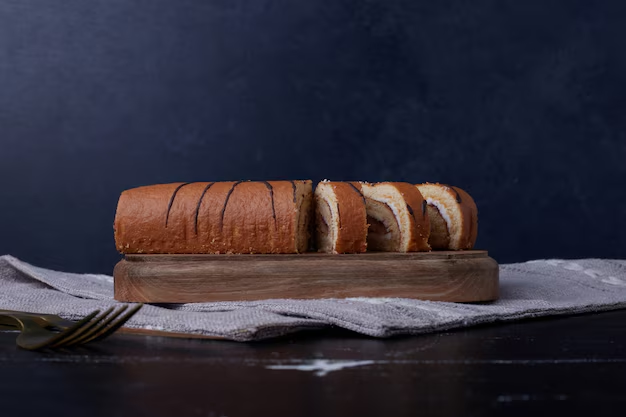Should You Keep Bread in the Refrigerator? What You Need to Know
Bread is one of those staple foods that finds a place in nearly every kitchen. It's versatile, comforting, and beloved. Yet, opinions often clash on how best to store it for maximum freshness and taste. A common question that stirs kitchen debates is: Should you keep bread in the refrigerator? This article delves into this culinary conundrum, presenting a comprehensive guide to storing bread and extending its shelf life while maintaining quality.
The Science Behind Bread Storage
What Happens to Bread When Stored in the Refrigerator?
Refrigeration affects bread at a molecular level. The starches in bread undergo a process called retrogradation when cooled, causing the bread to firm up, commonly perceived as staleness. Essentially, the fridge's chilled environment accelerates this process, making your loaf go stale faster than if left at room temperature.
- Staling vs. Spoiling: It's important to differentiate between staling and spoiling. Staleness refers to texture changes, while spoiling involves mold growth. Refrigeration slows mold but speeds up staling. 🍞
Temperature's Role in Bread Freshness
Bread's taste and texture are optimal at room temperature. The average kitchen environment allows bread to maintain its softness and flavor without the negative structural changes induced by cold temperatures.
- Room Temperature: The sweet spot for preserving bread's freshness and softness.
Storing Bread: Options and Best Practices
Room Temperature Storage
For most loaves, room temperature storage is sufficient. Here's how to do it right:
- Bread Box or Bread Bag: These are designed to keep out excess air while maintaining the loaf’s natural moisture. A bread box allows slight air circulation, preventing excessive moisture buildup, which can lead to mold.
- Paper or Cloth Bags: Unlike plastic, they don’t trap moisture, thus preventing mold growth.
Refrigeration: When and Why?
While generally not recommended, there are instances when refrigerating bread might be practical:
- Humidity Factor: In highly humid regions, refrigeration can prevent mold.
- Specialty Breads: Certain types, such as preservative-free or homemade breads, might benefit from refrigeration for a few days to delay mold growth.
Freezing: The Best Long-term Solution
Freezing is the most effective method for long-term storage without sacrificing quality:
- Proper Freezing Techniques: Slice the bread first, if possible, and wrap it tightly in plastic wrap, followed by a layer of aluminum foil or a freezer bag.
- Thawing Tips: Let it thaw naturally at room temperature or use a toaster for quick defrosting.
Longevity and Quality: Types of Bread and Storage
White vs. Whole Grain Bread
- White Bread: Generally contains preservatives, allowing it to last longer at room temperature.
- Whole Grain Bread: Often free of preservatives, it tends to spoil quicker, making refrigeration or freezing more favorable.
Specialty Breads and Artisan Loaves
Freshly baked, preservative-free loaves from bakeries might benefit from brief refrigeration if consumed within a few days but should ideally be stored in a bread box and used promptly.
Practical Bread Storage Tips & Tricks
Maximizing the life and quality of your bread isn’t just about where you store it. Here are some additional practical tips:
- Buy Smaller Loaves: Purchase what you can consume within a few days to avoid waste.
- Monitor Moisture: A dry kitchen is ideal for countertop storage. Moist environments might necessitate refrigeration or freezing.
- Multi-purpose Uses for Stale Bread: Don’t toss stale bread; turn it into breadcrumbs, croutons, or bread pudding.
🍪 Quick Tips for Keeping Bread Fresh
- Optimal Storage Zone: Use a bread box for everyday loaves.
- Use Bread Wisely: Reserve the freezer for surplus or specialty breads.
- Revive Stale Bread: Slightly dampen and warm in the oven for a fresh effect.
- Understanding Bread Types: Adjust storage based on bread composition (whole grain vs. white).
- Label and Rotate: Practice FIFO (First In, First Out) to reduce waste.
Related Topics: Understanding Bread Types and Ingredients
Preservatives and Bread Shelf Life
Preservatives help extend the shelf life of commercially produced bread, impacting your storage decisions. Knowing whether your bread is preservative-free can help you choose the right storage methods.
Gluten-Free and Special-Diet Breads
Gluten-free breads often contain higher moisture content and fewer preservatives. Therefore, watch for their spoilage signs more vigilantly and store them appropriately, often leaning towards refrigeration or freezing.
Myths and Misconceptions About Bread Storage
- Mold and Moisture: If bread molds in the fridge, it’s often due to trapped moisture, not the refrigerator itself. Make sure bread is completely cool before storing.
- Bread Never Lasts: Storing it correctly and knowing its ingredients can prolong its edibility.
Bringing Everything Together: Understanding Your Bread Storage Needs
Storing bread effectively balances science with your specific household needs. Every kitchen environment is different, and factors such as humidity, bread type, and consumption rates play crucial roles in deciding where to store your loaves. By understanding the principles of bread staling and spoilage, you can better manage this kitchen staple, keeping every slice as fresh as possible.
Ultimately, knowing when and why to refrigerate, or choosing to freeze, ensures you’re making informed decisions that keep your bread both tasty and safe. With these insights, you can now confidently store bread in a way that suits both your taste and lifestyle, optimizing freshness and minimizing waste. 🍞
